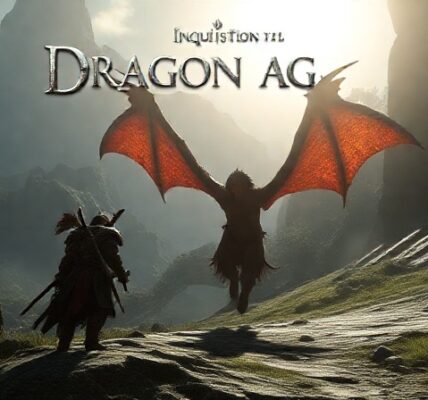When Dragon Age: The Veilguard launched on October 31, 2024, it reawakened hopes for a major return of the Dragon Age franchise. Fans and critics alike were eager to see how BioWare’s new entry would fare in the ailing RPG market. One of the first stop‑gaps for many is the Metacritic page, where aggregated scores from critics and users offer a snapshot of general sentiment. In this article, we dive deep into Dragon Age Veilguard Metacritic: what the critics thought, how players reacted, and how the discrepancy between them reveals as much about expectations as it does about the game itself.
H2: What Is the Metacritic Score for Dragon Age: The Veilguard?
H3: Critic Score & “Metascore”
On Metacritic, Dragon Age: The Veilguard holds a Metascore of 82 out of 100, based on 73 critic reviews — a mark categorized as Generally Favorable. Metacritic+1
Some platform-specific aggregates vary slightly (for example, different subsets of critic reviews per console), but the headline 82 remains the widely quoted figure. Metacritic+1
Critics’ reviews break down into roughly 75% positive and 25% mixed — with very few outright negative reviews. Metacritic
Many critics highlight the ambition of the game, praising storytelling, worldbuilding, and a sense of evolution in the franchise’s formula. Metacritic
H3: User Score & Discrepancy
By contrast, the user score on Metacritic is 3.9 out of 10, classed as Generally Unfavorable, based on over 8,400 user ratings. Metacritic+2Metacritic+2
This huge gap between critics and users has generated controversy, discussion, and accusations of “review bombing.” Many users voiced frustration that their low ratings appeared to vanish or be suppressed on Metacritic. Reddit+2Reddit+2
Even users in forums pointed out that it’s possible to leave a review as long as the game is in your library — regardless of whether you’ve played it — which some believe inflates negative scores after the game became free via PlayStation Plus. Reddit
The discrepancy is so stark that many observers argue it reflects a divide in expectations rather than pure quality.
H2: Why Did Critics and Users Differ So Widely?
H3: What Critics Loved
Critics generally approach a game with an awareness of its design goals, budget constraints, and legacy context, and many found that Veilguard delivered a solid package:
-
A renewed focus on narrative and character arcs, giving weight to companions and lore. Metacritic
-
Improved combat systems and quality-of-life enhancements compared to earlier Dragon Age titles. Metacritic+1
-
Strong visuals, immersive world design, and satisfying pacing — in spite of some rough edges. Metacritic+1
Some reviews even hailed it as the best Dragon Age in years. Metacritic+2GameSpot+2
H3: Users’ Criticisms & Review Bombing Claims
User reviews, on the other hand, often reflected frustration and disappointment — especially from long‑time franchise fans:
-
Many users felt that the depth of choice and moral ambiguity, a hallmark of earlier Dragon Age games, was greatly diminished. Metacritic+2Reddit+2
-
Complaints surfaced regarding underwhelming writing, flat character development, or overly simplified gameplay loops. Metacritic+2Reddit+2
-
The accusation that Metacritic was deleting negative or “toxic” reviews has been widely discussed in gaming communities. Reddit+1
-
The timing of the game becoming available via PlayStation Plus led some to speculate that users were rating it without deep engagement. Reddit+2Reddit+2
This disconnect between critics and users is not unique to Veilguard, but its magnitude has made it a case study in review dynamics.
H2: What the Metacritic Score Means for Dragon Age Veilguard
H3: A Solid Critical Success (With Caveats)
An 82 Metascore places Dragon Age: The Veilguard solidly in the “good” range. It suggests a game that achieves many of its goals, though perhaps without reaching perfection. For a franchise reboot after a long hiatus, such a score signals confidence from professional reviewers in BioWare’s direction. Metacritic+2Metacritic+2
It’s worth noting that critics often grant some grace to games that aim high — factoring in ambition, technical achievement, and genre legacy.
H3: Reputation, Sales & the Echo Chamber
A poor user score can influence public perception, even if critics are more generous. Many potential buyers check user reactions first, giving voice to the “lived experience” of players. In the case of Veilguard, the dissonance between critics and users sparked debates over whether the game had been unfairly maligned or if critics were being too kind.
Moreover, negative word-of-mouth can affect long-term sales trajectories, especially in the months after launch.
H3: Updates, Patches & Redemption Potential
BioWare has not remained entirely silent. The studio surprised many by issuing a PC update after previously suggesting only essential fixes would follow. This patch included cosmetic content — for example, the Rooks Weapons Appearance Pack, made available for free to eligible Steam users. GamesRadar+
While cosmetics don’t fix deeper issues of writing or systems design, they do signal continued investment in the title and willingness to engage with the player base.
H2: Tips for Readers & Potential Buyers
H3: Use Metacritic Wisely
-
Don’t take the user score or critic score in isolation. Read a few full reviews from sources you trust.
-
Pay attention to common themes: Do many critics or users cite similar strengths or flaws (e.g. pacing, character arcs, combat design)?
-
Watch for patches and post-launch updates — scores may improve or sentiment shift over time.
H3: Try Before You Judge (Especially for RPG Fans)
If you’ve enjoyed prior Dragon Age games or Bioware’s storytelling style, there’s a good chance Veilguard will resonate with you in certain segments. Conversely, if your priorities lean heavily toward strong decision-making, deep RPG mechanics, or uncompromising narrative freedom, you may find some of the game’s compromises frustrating.
H3: Contribute Thoughtfully to Community Ratings
If you play Veilguard, consider writing a nuanced review — positive or critical — rather than giving an extreme score based on hype. Balanced feedback helps future players and gives clearer signals to developers.
Conclusion
The “Dragon Age Veilguard Metacritic” page offers a fascinating microcosm of divide: an 82 Metascore from critics contrasted with a 3.9 user rating. That gulf suggests not just disagreements over Veilguard’s merits, but a deeper tension between expectations, franchise nostalgia, and the evolving evaluation habits of gamers.
Ultimately, the Metacritic metrics are a starting point — they tell you what many people think at a glance. Whether Dragon Age: The Veilguard is worth your time still depends on your tastes, your expectations, and your willingness to accept both the highs and the flaws.





